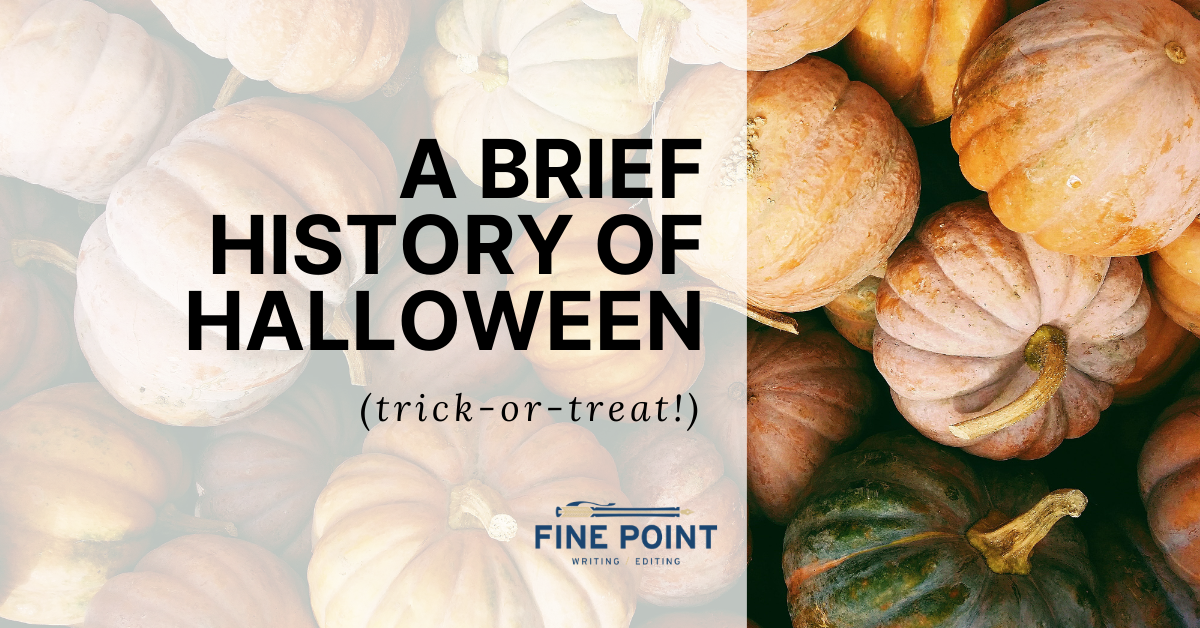Halloween is the spookiest night of the year.
A Brief History of Halloween
Halloween evokes memories of trick-or-treating, costume parties, scary stories, and of course, eating a lot of candy. But why do we have these strange customs? Like most of our holidays, many of our modern Halloween customs actually have roots in ancient tradition.
Early Beginnings
Halloween can be traced back about 2000 years to the ancient Celtic festival Samhain (pronounced sow-in). This day marked the end of the harvest and the beginning of the dark, cold winter. It was believed that because it was a day of transition, the boundary between the dead and the living was blurred, and the spirits of the dead could walk on the earth. The celebrations would include large bonfires, sacrifices to the dead, and dressing as evil spirits so the spirits couldn’t recognize you.
As Christianity moved into Celtic areas, Samhain was gradually blended with All Saints Day (November 1) and All Souls Day (November 2). Many people believe that these holidays were an attempt to replace Samhain with a Church-sanctioned celebration. While All Saints Day was meant to honour Catholic saints, All Souls Day was similar to Samhain; it was meant to honour the dead and was celebrated with bonfires and dressing up in costume. However, the costumes were now saints, angels, and devils.
Why’s it Called ‘Halloween’?
How did we get the name we all know today? All Saints Day was commonly called All-hallows or All-hallowmas. Hallow means holy or consecrated, and it refers to the holy saints who were remembered on All Saints Day. The day before All-hallows was known as All-hallows Eve, and later, Hallows Eve. Eve was eventually shortened into the contraction “een”. Thus, we have “Halloween.” Scottish poet Robert Burns popularized the name in his poem titled Halloween. You can read his poem here.
Trick or Treat
The tradition of giving candy away on Halloween is a recent one, but food has long been a part of Halloween’s history. In its early days as a pagan festival, people would burn crops, animals, and other foods as a sacrifice to Celtic deities. Later, people believed that faeries would disguise themselves as beggars asking for food. Faeries were believed to reward those who gave food and play tricks on those who did not – leading into the popular phrase “trick or treat.”
Eventually, this practice was replaced with ‘souling’. ‘Soulers’ would go door to door asking for ‘soul cakes’. But rather than threatening to play tricks in exchange for the treat, they would pray for the souls of the dead. Much later, between 1920 and 1950, Halloween became a secular, community holiday. At this time, trick-or-treating really took hold. It became a safe, family-friendly way for an entire community to celebrate Halloween.
Why Bob for Apples?
When the Romans conquered Celtic land around 43 A.D., they incorporated their own traditions into Samhain. One of their traditions related to Pomona, the goddess of fruit and trees. Pomona’s symbol is the apple, which would explain the apple’s inclusion in the holiday. The apple is used for some fortune-telling rituals, where the apple you bob for represents your future husband. If you peel the apple and toss the peel over your shoulder, it will show your future husband’s initials.
Really? A Romantic Holiday?
Halloween isn’t thought of as a romantic holiday, but at one time there were Halloween rituals to help young women discover their future husband. In addition to the apple rituals, there were a few other ways to help you find love. A match-making cook might add a ring to her mashed potatoes to bring true love to the woman who found it. Women would also toss a hazelnut for each suitor into the fire. The nut that burnt instead of popping represented her future husband.
Wishing you a happy Halloween filled with treats, tricks, and… love!






